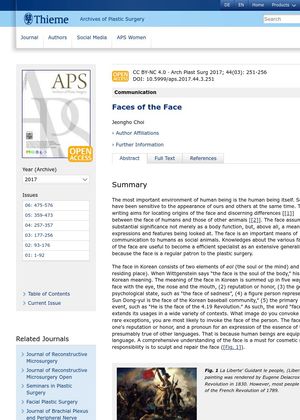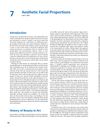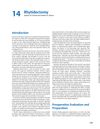Faces of the Face: Evolutionary Origins and Significance in Communication and Plastic Surgery
May 2017
in “
Archives of Plastic Surgery
”

TLDR The document concludes that understanding the evolution of the human face helps cosmetic surgeons meet aesthetic desires.
The 2017 document "Faces of the Face" discussed the evolutionary origins of the human face, its role in communication, and its significance in plastic surgery. The face, which emerged during the pre-Cambria Period, is a product of evolutionary processes and reflects the survival environment of animals. The paper highlighted the evolution of facial features in mammals, such as the loss of fur and the separation of the upper lip from the gum in primates, which expanded communication capabilities. However, these changes resulted in visible aging signs in humans. The document also discussed the evolution of the hyoid bone and the platysma muscle, which have evolved to facilitate complex movements and contribute to aging phenomena like the double chin. The loss of facial hair in humans was suggested as an evolutionary adaptation to enhance emotional signaling and socialization. The document concluded by emphasizing the role of cosmetic surgeons in understanding these changes and bridging the gap between natural facial structures and human aesthetic desires.



